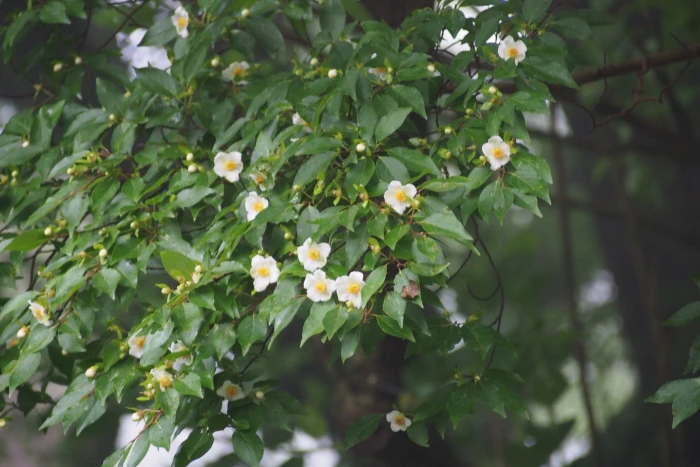Tall Stewartia
(Stewartia monadelpha)
Tall Stewartia (Stewartia monadelpha)
/
/

harum.koh
CC BY-SA 4.0
Image By:
harum.koh
Recorded By:
Copyright:
CC BY-SA 4.0
Copyright Notice:
Photo by: harum.koh | License Type: CC BY-SA 4.0 | License URL: http://creativecommons.org/licenses/by-sa/4.0/ | Rights Holder: harum.koh | Publisher: iNaturalist | Date Created: 2016-07-02T15:16:36-07:00 |

























Estimated Native Range
Climate Requirements for Towson, Maryland
| This Plant | Your Site | Plant Suitability for Your Location | ||
|---|---|---|---|---|
| • Precipitation | 42" - 135" | 45" | Aquatic | Aquatic |
| • High Temp. | 69°F - 93°F | 86°F | Your summer temperatures are normal for this plant. | Excellent |
| • Low Temp. | 14°F - 47°F | 24°F | Your winter temperatures are normal for this plant | Excellent |
This plant should grow well at your location with about N inches per year (Y minutes per month) of irrigation.
Summary
Stewartia monadelpha, commonly known as Tall Stewartia or Orangebark Stewartia, is a deciduous shrub or small tree native to the cool temperate forests of Japan. It typically grows to a height of 25 feet but can occasionally reach up to 80 feet in its natural habitat. The bark is a distinctive orange or cinnamon-brown, peeling in strips to reveal a smooth, attractive texture. The leaves are elliptic and serrated, turning a striking red in the autumn. Small, camellia-like white flowers with prominent yellow stamens bloom in June and are quite showy, adding to the plant’s ornamental value.
Tall Stewartia is valued for its beautiful exfoliating bark, which provides year-round interest, and its vibrant fall foliage. It is used in cultivation for border planting, as a specimen tree, and in woodland gardens. This species thrives in partial shade but can tolerate full sun if provided with well-drained, acidic to neutral soil. It requires regular watering, especially during dry periods. While it is generally low-maintenance, it can be susceptible to leaf spot and canker diseases. Gardeners should be aware that it may not flower prolifically every year, and it is best to avoid transplanting mature specimens due to their sensitivity.CC BY-SA 4.0
Tall Stewartia is valued for its beautiful exfoliating bark, which provides year-round interest, and its vibrant fall foliage. It is used in cultivation for border planting, as a specimen tree, and in woodland gardens. This species thrives in partial shade but can tolerate full sun if provided with well-drained, acidic to neutral soil. It requires regular watering, especially during dry periods. While it is generally low-maintenance, it can be susceptible to leaf spot and canker diseases. Gardeners should be aware that it may not flower prolifically every year, and it is best to avoid transplanting mature specimens due to their sensitivity.CC BY-SA 4.0
Plant Description
- Plant Type: Shrub, Tree
- Height: 20-25 feet
- Width: 15-25 feet
- Growth Rate: Moderate, Slow
- Flower Color: White
- Flowering Season: Spring, Summer
- Leaf Retention: Deciduous
Growth Requirements
- Sun: Full Sun, Part Shade
- Water: Medium
- Drainage: Medium, Slow
Common Uses
Bird Garden, Border Plant, Low Maintenance, Potted Plant, Showy Flowers, Water Garden
Natural Habitat
Cool temperate forests of Japan
Other Names
Common Names: Tall Stewartia , Hime-Shara , Monadelphous Stewartia , Japanese Stewartia
Scientific Names: Stewartia monadelpha , Stewartia monadelpha f. sericea , Stewartia sericea
GBIF Accepted Name: Stewartia monadelpha